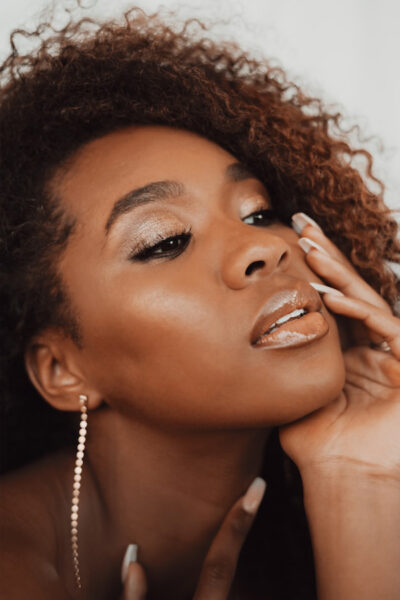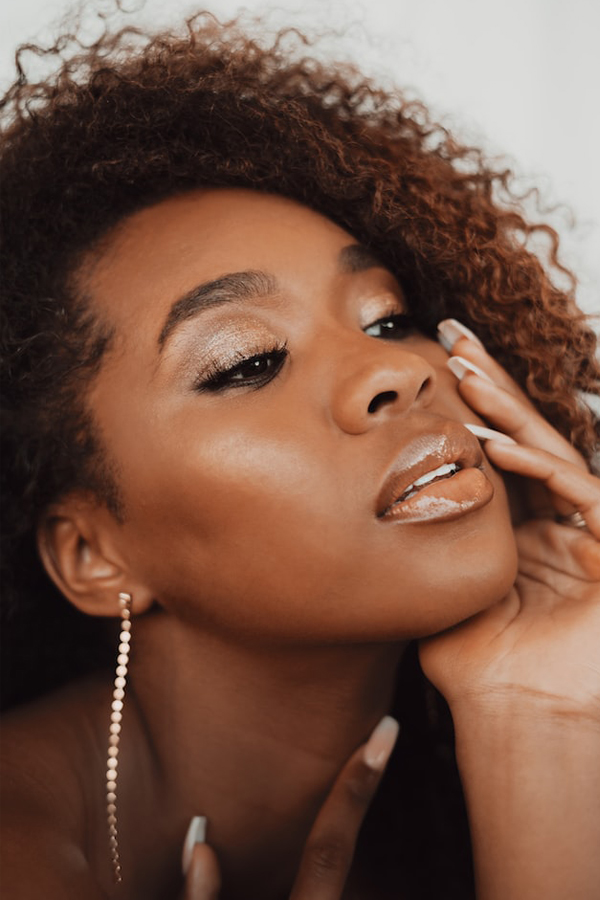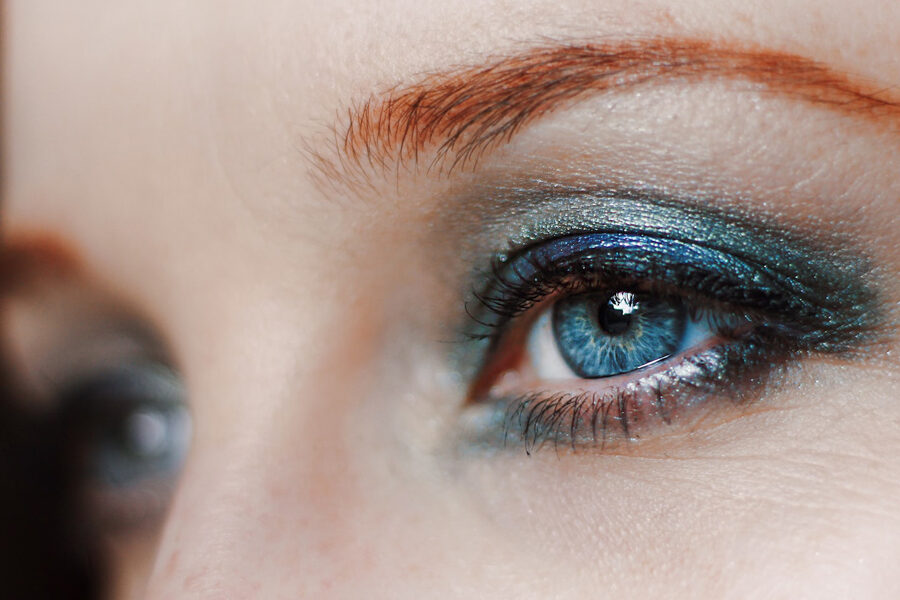
With the stroke of a brush, the swipe of a wand, and the blend of a sponge, makeup transforms not just one’s appearance but also one’s self-expression. From accentuating lashes with mascara, adding a pop of color to eyes with eyeshadow, emphasizing lips with lipstick or lip gloss, to achieving a polished look with primer and foundation, makeup empowers individuals to showcase their unique beauty and confidence. Therefore, foundation is an essential part of any makeup routine. It helps to even out the skin tone and create a smooth canvas for the rest of your makeup. However, choosing the right product and applying it correctly can be a bit tricky. With so many different formulas and shades on the market, it can be overwhelming to find the perfect match for your skin type and concerns.
In this article, we will discuss the different types of foundation, how to find the right shade, and tips for applying foundation for a flawless, natural-looking finish and lot more.
Types of Foundations
Foundations are a staple in any makeup routine. It is used to even out the skin tone and create a smooth base for the rest of your makeup. There are several different types of foundations available, each with their own unique properties and benefits. So, here is a breakdown of the most common types of foundations:
1. Liquid foundation
Liquid foundation is the most popular type of foundation, and is available in a wide range of shades and finishes. It is easy to apply, blends well and provides a natural-looking finish. Moreover, it is best for normal to oily skin as it creates a smooth canvas for makeup and is easy to spread.
2. Powder foundation
Powder foundation is a popular option for those with oily or combination skin, as it helps to control shine and absorbs excess oil. You can apply this using a brush or sponge, and can be layered for more coverage. This type is also great for touch-ups throughout the day.
3. Cream foundation
Cream foundations are thicker and more opaque than liquid foundations and are great for dry or mature skin as it hydrates and provides a dewy finish. You can apply cream foundstion using a brush, sponge or fingers, and are great for medium to full coverage.
4. Stick foundation
Stick foundations are similar to cream foundations and are perfect for those on-the-go or for touch-ups. They are easy to apply and can be used as a concealer as well. In addition, they are perfect for normal to oily skin type.
5. Mousse foundation
Mousse foundations are lightweight and provide a natural finish. They are easy to blend and can be applied with a brush or sponge. Moreover, they work well for normal to oily skin types.
6. Mineral foundation
Mineral foundation is made of crushed minerals and provides a natural finish. They are great for sensitive skin and are non-comedogenic. So, they are perfect for those with oily or sensitive skin.
7. Tinted Moisturizer
Tinted Moisturizer is a lightweight foundation that hydrates the skin and provides a natural finish. Moreover, it is a great option for those with dry or normal skin and are perfect for everyday wear.
Ultimately, the best type of foundation for you will depend on your skin type, coverage needs, and personal preferences. Moreover, it’s always a good idea to try out different types of foundations to find the one that works best for you.
How To Choose the Right Shade of Foundation for Your Skin Tone
Choosing the right shade of foundation is crucial to achieving a natural-looking finish. A foundation that is too light or too dark can make your skin look unnatural and can also accentuate fine lines and wrinkles. Here are a few tips to help you find the perfect shade of foundation for your skin tone:
1. Test the shades on your jawline
The best way to find the right shade of foundation is to test it on your skin. Apply a small amount of product on your jawline and blend it in to see how it matches your skin tone. This is the most accurate way to match your skin because your face, neck, and chest can have different undertones and shades.
2. Consider your undertone
Undertone is the color that lies beneath your skin’s surface, and it can be cool, warm, or neutral. To determine your undertone, look at the veins on your wrist. If they appear blue, you have cool undertones, if they appear green, you have warm undertones. On the other hand, if they appear blue-green, you have neutral undertones. As a result, this will give you an idea of the type of shades that will suit you better.
3. Check your shade in natural light
When testing shades, make sure to do it in natural light. Artificial light can change the color of the foundation, making it look different on your skin than it would in natural light.
4. Be open to trying different brands
Not all foundations have the same shades or undertones, so don’t be afraid to try different brands to find the right shade for you.
5. Mix two shades
If you can’t find an exact match for your skin tone, it’s okay to mix two shades. A shade that’s slightly too light can be mixed with a shade that’s slightly too dark to create the perfect match for your skin.
6. Don’t be afraid to ask for help
If you’re still unsure about which shade to choose, don’t hesitate to ask for help from a makeup artist or beauty advisor. They can help you find the perfect shade for your skin tone.
It’s also important to note that your skin tone can change over time due to exposure to the sun, hormonal changes, and other factors. So, it’s good to check your shade every now and then and make adjustments as needed.
How To Find the Best Foundation for Your Skin Type and Concerns
When shopping for foundation, it’s important to consider more than just your skin tone. Your skin type and concerns should also be taken into account in order to find the perfect match. Here are some tips to help guide you in your search:
1. Identify your skin type
Understanding your skin type is the first step in finding the right foundation. There are five main skin types: oily, dry, combination, sensitive, and normal. Oily skin is characterized by a shiny appearance and large pores, it also tends to have a greasy feeling, and is prone to acne and blackheads. Dry skin is characterized by flakiness, tightness, and can feel rough to the touch. Combination skin is a mix of oily and dry areas, some parts of the face may be oily like the T-zone (forehead, nose and chin) while other parts may be dry like cheeks. Sensitive skin is easily irritated, redness, itching, burning, and stinging can be common symptoms. Normal skin is well-balanced and doesn’t have any major concerns, it feels smooth, soft and hydrated.
2. Determine your skin concerns
Do you have acne-prone skin? Are you looking for anti-aging benefits? Knowing your skin concerns will help you choose a foundation that addresses those specific issues. For example, if you have acne-prone skin, you’ll want to look for a foundation that is non-comedogenic (meaning it doesn’t clog pores) and oil-free. These types of foundations are less likely to cause breakouts. Also, look for foundations that contain salicylic acid, benzoyl peroxide, or sulfur which are known to be effective ingredients in treating acne. If you’re looking for anti-aging benefits, you may want to look for a product that contains antioxidants or other age-defying ingredients like retinol, hyaluronic acid, and collagen. These ingredients can help to reduce the appearance of fine lines and wrinkles, and improve skin elasticity.
3. Test the foundation
Always test the foundation on your skin before you buy it. You can do this by applying a small amount to your jawline and blending it in. The foundation should blend seamlessly into your skin and match your skin tone. Avoid testing product on the back of your hand, as the skin there is not the same color as your face. It’s best to test the foundation in natural light, as the lighting in stores can be deceiving. If possible, wear the product for a few hours to see how it looks on your skin throughout the day.
4. Consider the finish
Foundations come in different finishes, such as matte, dewy, and satin.
- Matte foundations are best for oily skin, as they absorb excess oil and give a smooth finish. These types of foundations are great for controlling shine and keeping skin looking matte all day.
- Dewy foundations are great for dry skin, as they add a subtle glow and hydration. These foundations are perfect for achieving a natural and healthy-looking glow.
- Satin finish foundations are good for normal and combination skin types, it gives a natural and balance finish. It’s a good middle ground between matte and dewy, it gives a natural looking finish without being too shiny or too matte.
5. Ingredients
If you have sensitive skin, you’ll want to look for a foundation that is formulated with hypoallergenic and non-irritating ingredients. Avoiding ingredients like fragrances, parabens, and alcohols can help to prevent irritation. Also, if you have any other specific skin concerns like eczema, rosacea, or psoriasis, you’ll want to look for a product that specifically caters to that. For example, if you have eczema, you may want to look for a foundation that is formulated with ingredients like colloidal oatmeal, which can help to soothe and calm irritated skin.
How To Apply Foundation for A Natural-Looking Finish
Achieving a natural-looking finish with foundation can be a bit tricky, but with the right technique and tools, you can achieve a flawless and seamless look. Here are some tips on how to apply foundation for a natural-looking finish:
- Before applying any makeup, first make sure your face is clean and moisturized. This will ensure that your foundation goes on smoothly and lasts longer.
- Next, choose the right shade of foundation to achieving a natural-looking finish. Test the shade on your jawline, under natural light, to ensure it’s the right match for your skin tone.
- Apply a small amount of primer to your face. This will help to smooth out your skin and create a base for the foundation to adhere to.
- Use a brush, sponge or your fingers to apply foundation, starting at the center of your face and blending outwards. Be sure to blend the prodcut well, paying special attention to the hairline, jawline, and around the nose and mouth.
- Start with a small amount of foundation and build coverage gradually. This will help to achieve a natural-looking finish and prevent the product from looking heavy or cakey.
- Use concealer to cover up any blemishes or dark circles. Apply it after foundation, using a concealer brush or your finger to blend it in well.
- Use a translucent powder to set your foundation in place. This will help to prevent the productfrom sliding off your face and absorb any excess oil.
- Finally, make sure to blend everything seamlessly, especially around the hairline, jawline, and the corners of the nose and mouth, these are the places where makeup tends to rub off or be noticeable.
Also, remember that practice makes perfect, so don’t be discouraged if it takes a few tries to get the hang of it.
Maybelline Fit Me Matte + Poreless Liquid Foundation
Maybelline Fit Me Matte + Poreless Liquid Foundation Makeup is a medium coverage liquid foundation that is perfect for normal to oily skin. It comes in 40 shades, making it easy for you to find the perfect match for your skin tone. The product is oil-free and refines pores for a natural looking matte finish. It is America’s No.1 Foundation, according to L’Oreal’s calculation based on data reported by Nielsen for the 52-week period ending February 9, 2019, for the US xAOC market.
This product is perfect for those looking for a natural looking medium coverage foundation. The wide array of shades available, from Ivory to Mocha, makes it easy for you to find the perfect match for your skin tone. Moreover, you can use it as a full face foundation and build coverage gradually for a flawless, natural-looking finish.
The Maybelline Fit Me collection includes Matte + Poreless foundation, Dewy+ Smooth foundation with SPF 18, concealer, finishing powder, bronzer, and blush, everything you need to put your best face forward. The brand also has a wide range of products including foundation, BB creams, concealers, eyeshadows, brow pencils, eyeliners, and lip products that can help you create any look you desire, from a natural look to a bold and dramatic look.
In addition to remove the Maybelline Makeup, you can use Garnier Micellar Water as a gentle makeup remover at night, and as a facial cleanser in the morning to prep skin for Maybelline makeup.
How to Make Foundation Last Longer
To make foundation last longer on your skin, there are several steps you can take before and after applying the product. Here are some tips to help make your foundation last longer:
- Start by cleansing your skin, and then apply a moisturizer and primer to create a smooth base for your foundation. This will help the product to adhere better to your skin and last longer.
- After applying foundation, use a translucent setting powder to set the foundation in place. This will help to absorb any excess oil and keep the product from sliding off your face.
- After applying foundation and powder, use a setting spray to lock in your makeup. This will help to keep your product in place and prevent it from melting or fading.
- When applying foundation, use a brush or sponge that is specifically designed for foundation. This will help to ensure even coverage and prevent the product from being absorbed into the brush or sponge, which can cause it to fade quickly.
- To make your foundation last longer, be sure to touch up your makeup throughout the day as needed. This will help to keep your foundation looking fresh and flawless.
- Look for the foundation with the properties mentioned before. These properties will help to keep the product in place and prevent it from sliding off or smudging due to sweat or oil.
- Make sure you are using the right shade of foundation for your skin tone. A shade that is too light or dark can make it obvious that you are wearing the product, which can make it appear less natural and more likely to wear off.
By following these tips, you can help to make your foundation last longer and keep your skin looking flawless all day.
Best Practices for Storing and Maintaining Your Foundation
Storing and maintaining your foundation properly can help prolong its shelf life and ensure that it stays fresh and effective. So, here are some best practices for storing and maintaining your foundation:
1. Keep it away from heat and light
Exposure to heat and light can cause the ingredients in your foundation to break down, making it less effective. Therefore, store your foundation in a cool, dry place away from direct sunlight.
2. Avoid extreme temperatures
Avoid storing your foundation in places that get too hot or too cold, such as a car or near a window. This can cause the product to separate or change consistency.
3. Keep it clean
Make sure to keep the top of your foundation clean and free of any excess product. This will prevent bacteria from growing on the surface of the product.
4. Use it before it expires
Foundations have a shelf life and it’s important to use them before they expire. Many foundations will have a shelf life of around 12-24 months, check the expiry date on the packaging or the product itself and try to use it before it expires.
5. Don’t overuse the foundation
Using too much foundation can cause it to become cakey and can lead to a buildup of bacteria on the skin. Try to use the appropriate amount and apply it evenly.
6. Clean your tools
Make sure to clean your tools such as beauty blender or foundation brush regularly with a gentle soap to prevent bacteria buildup and ensure a smooth and even application.
By following these best practices, you can help ensure that your foundation stays fresh and effective for as long as possible. Remember that foundation is not only makeup, but it’s also a skincare product that needs to be handled with care.
Conclusion
In conclusion, foundation is a versatile and essential tool for any makeup routine, but it can be challenging to find the perfect match for your skin type and concerns. By understanding the different types of foundation, testing shades in natural light, and using the right tools and techniques, you can achieve a flawless, natural-looking finish. Remember that practice makes perfect and with time, you’ll be able to master the art of foundation application. So, with the right prooduct, you can create a flawless, radiant look that lasts all day.



